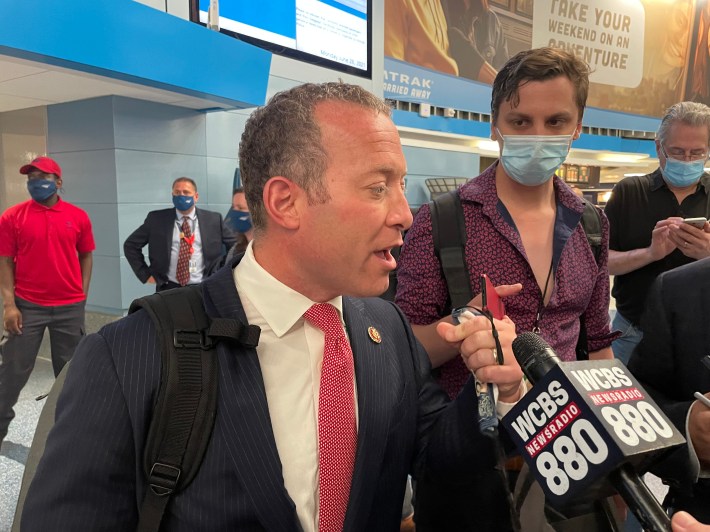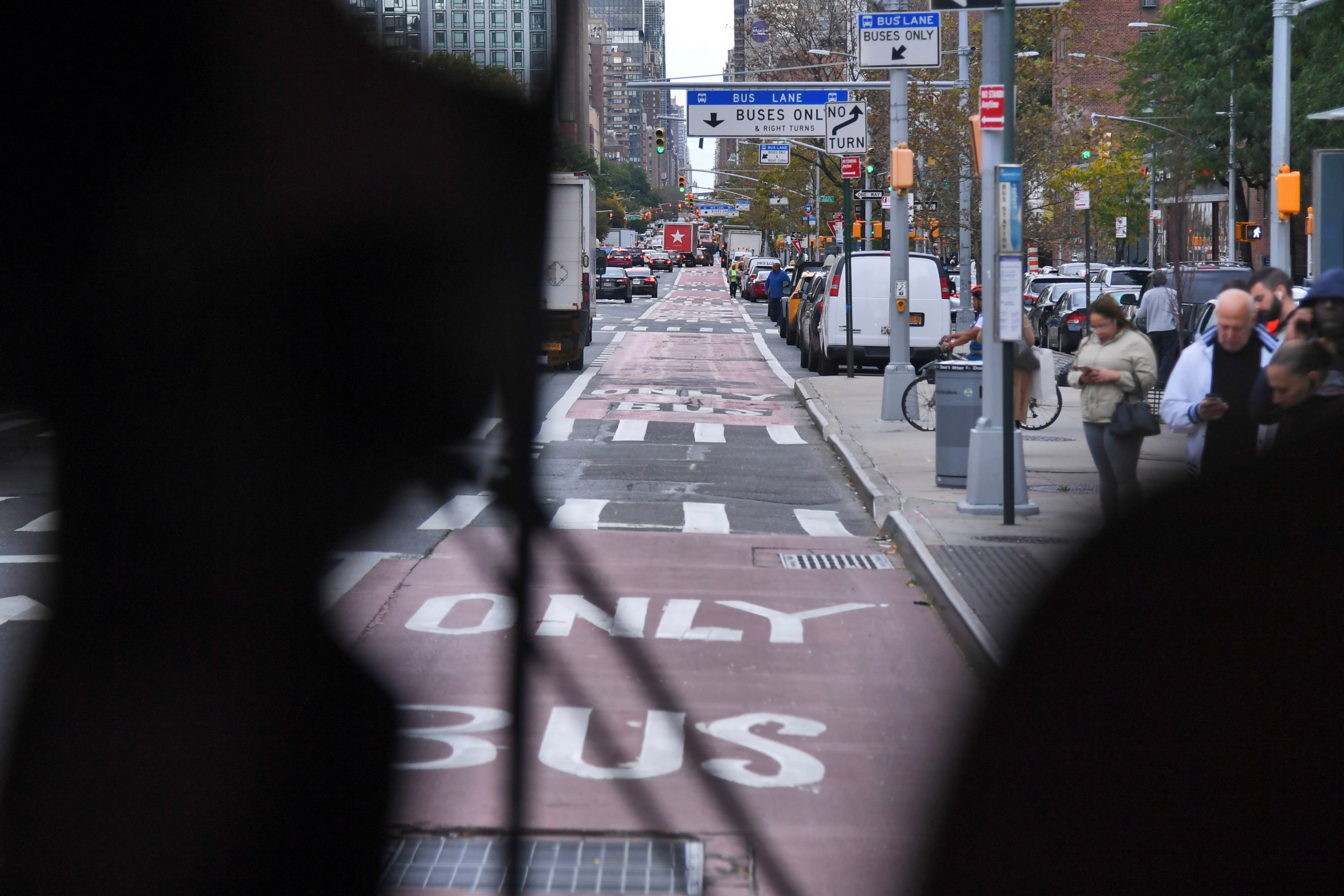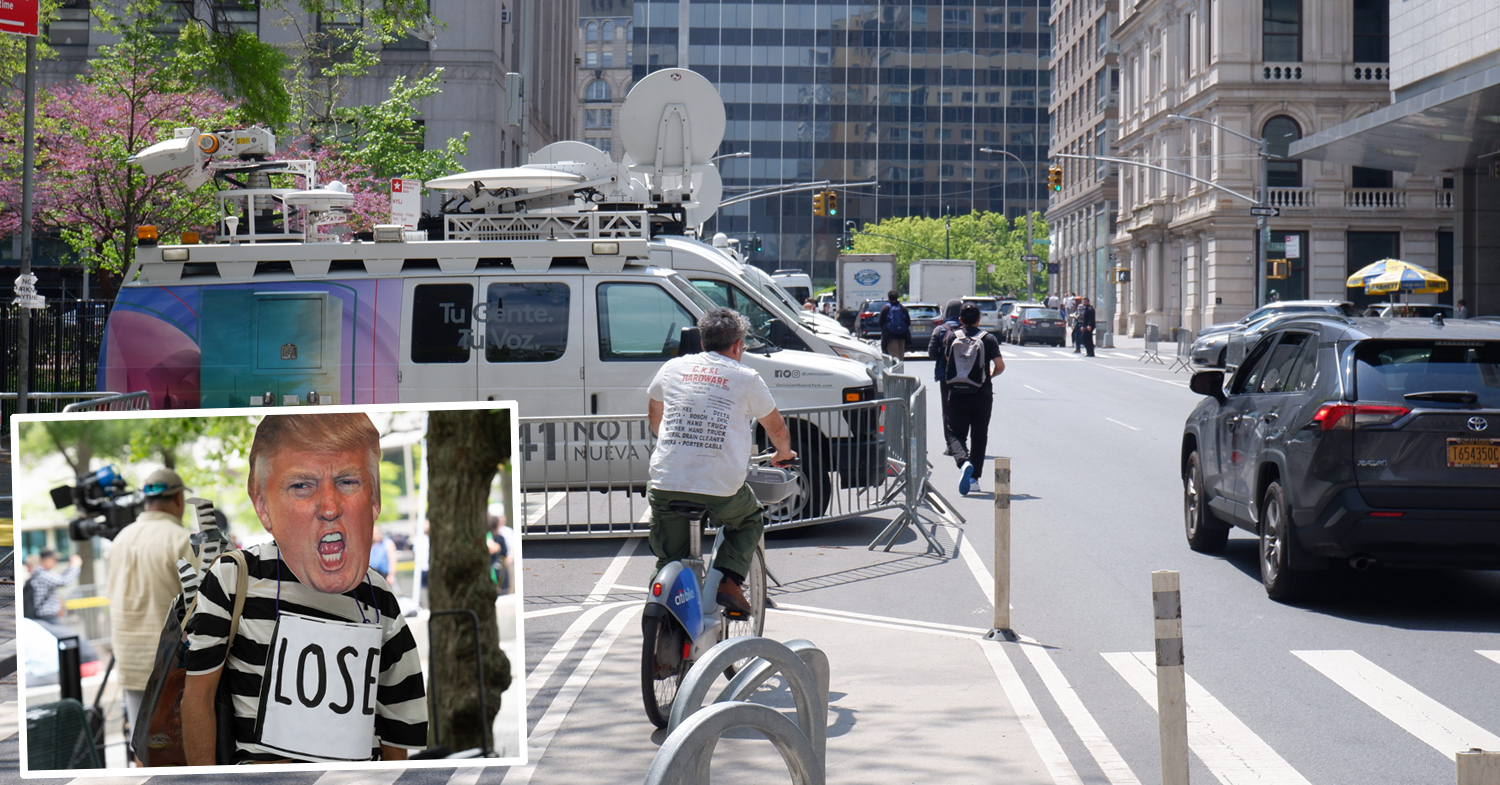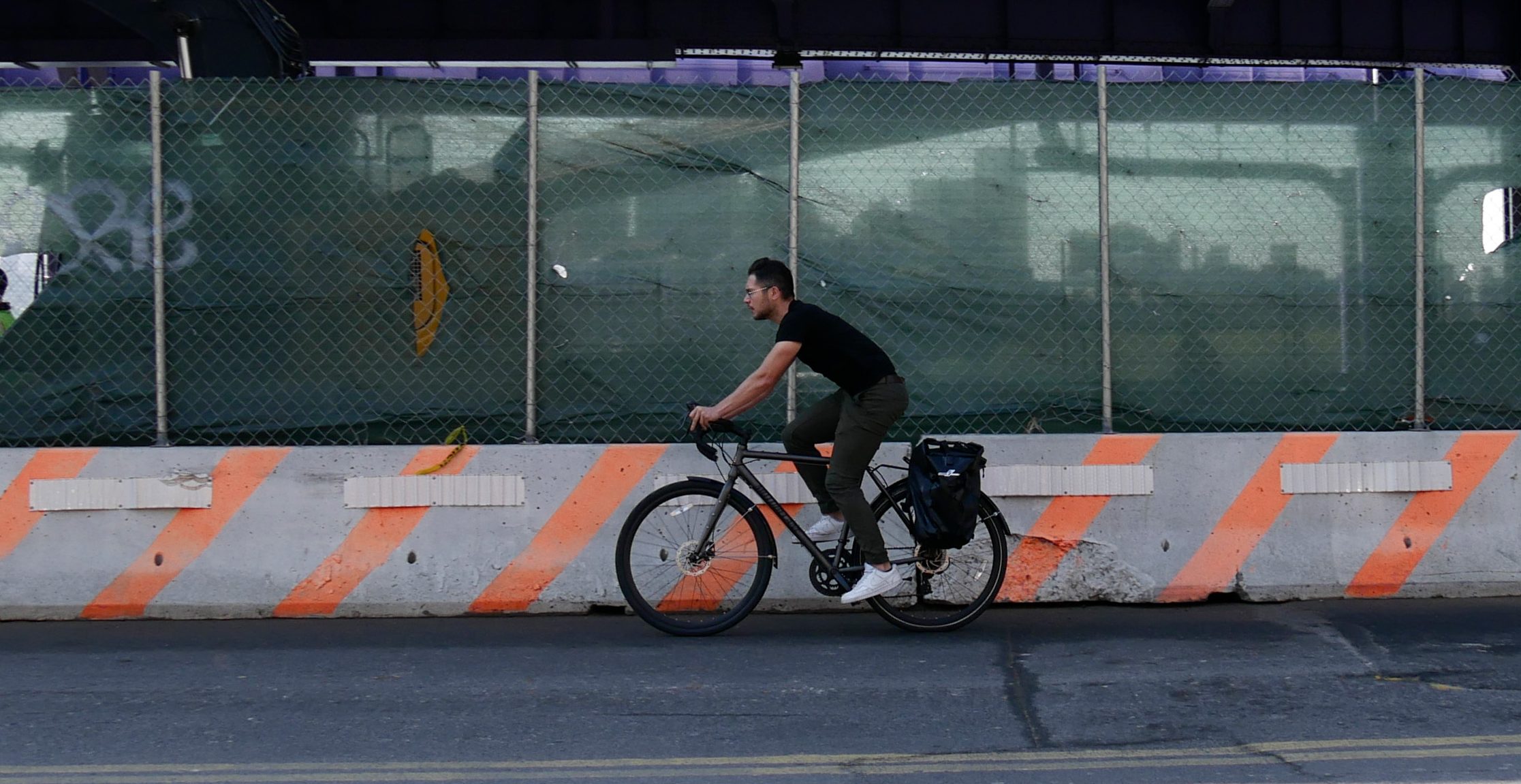Data: The Very Few New Jersey Commuters Who Will Pay Congestion Toll Are Much Richer
12:01 AM EDT on October 5, 2021
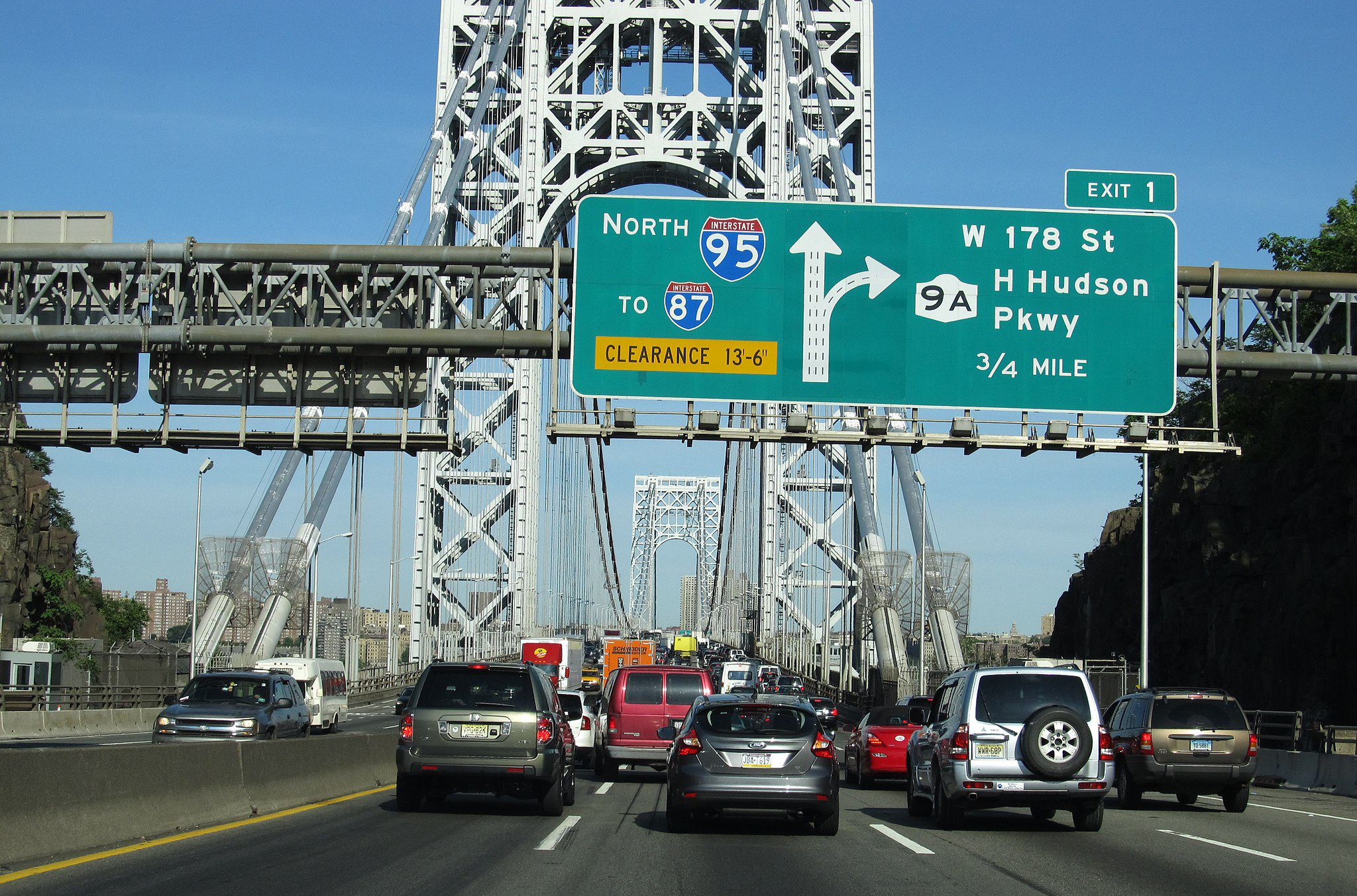
Photo: Ken Lund
The elite meet to bleat.
New Jersey commuters who drive into the so-called Central Business District of Manhattan comprise a small group of wealthy people, according to Census data crunched by the Tri-State Transportation Campaign and released on Monday — a stinging rebuke to caterwauling New Jersey politicians who claim that congestion pricing is an unfair tax on the hard-working middle class.
The pro-transit group looked at commuting patterns in 21 legislative districts in the Garden State that are closest to Manhattan and found that, on average, just 1.6 percent of commuters from those areas drive into the CBD for work — and the median income of those commuters was $107,996 per year, or roughly 22 percent higher than the $88,407 median for commuters who use transit.
In short, New Jersey drivers who use the Holland or Lincoln tunnels or the George Washington Bridge to get to Manhattan below 60th Street are few in numbers but large in wallet.
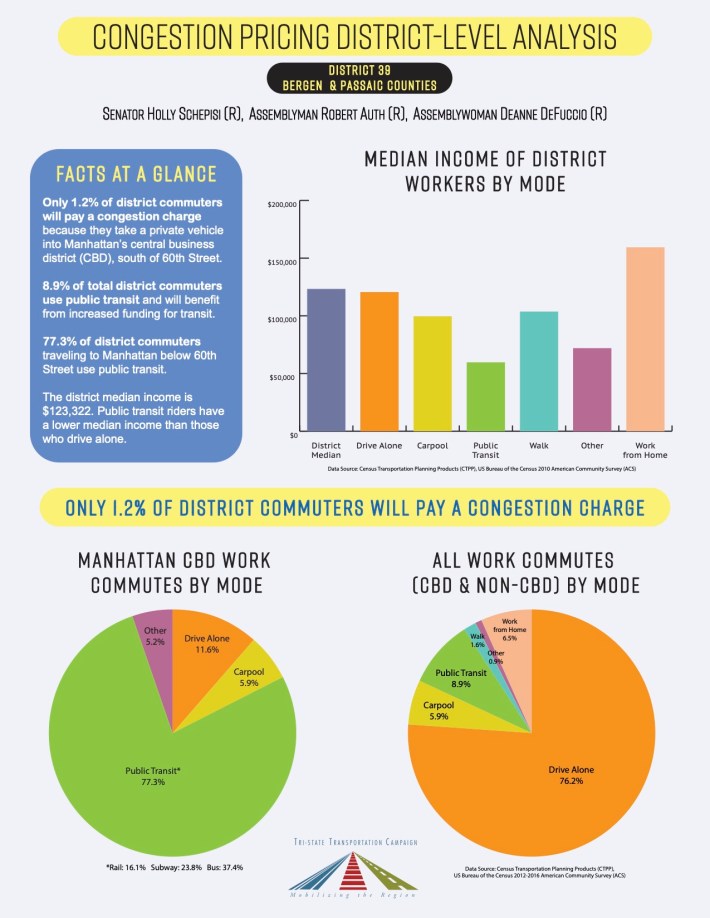
Each of the 21 districts gets its own Tri-State fact sheet based on Census data to show how many commuters in the district would pay the congestion pricing charge, the median incomes of each type of commuter and the breakdown of how commuters from every county get to the central business district. (See an example to the right; click to expand it.) Like the fact sheets that the organization published for legislative districts in New York, the latest sheets make it very clear that residents who commute by car into the Central Business District are far better off than people who use public transit.
In Districts 17 and 25, two of the westernmost districts studied by Tri-State, only 1 percent of each district's commuters drive into the central business district as a destination. Conversely, 68.9 percent of commuters into the CBD from District 17 get there via public transit, and 77 percent from District 25 use public transportation. The median income of workers in each district is over $100,000 per year for people who drive to work alone, while the median income for those who use public transportation is near $80,000 per year — again about 20 percent less.
Closer to Manhattan, the numbers are not much different. In Districts 37 and 38, which are near the George Washington Bridge, only 1.7 percent and 1 percent of commuters from each respective district would pay a congestion charge, while 74.5 percent of District 37 commuters into the CBD and a whopping 83.1 percent of CBD commuters in District 38 would benefit from the toll because it is slated to raise $15 billion in bonding revenue to fund improvements to MTA service.
Despite those numbers, Sen. Loretta Weinberg, who represents District 37 in addition to being New Jersey State Senate Majority Leader, once told Politico that congestion pricing is "going to make it impossible" to commute and suggested that the $9 to $23 toll currently under consideration would make it "cheaper to fly to California." (Point of information: New Jersey residents with E-Z Pass already pay $13.75 in peak-hour tolls (and $11.75 off-peak) at the Holland and Lincoln tunnels.)
Districts 37 and 38 are also in the Congressional district represented by famed congestion pricing foe and Biden agenda saboteur Rep. Josh Gottheimer. The congressman, who has introduced federal legislation to prohibit congestion pricing, has previously suggested — despite the numbers above — that it's "impossible" to provide mass transit options for his working class constituents (in a district with a median income of $110,000 per year). Other legislative districts in northwest New Jersey that are within Gottheimer's federal district reflect the same transit-heavy commuting patterns, and are populated by drivers with far higher incomes than public transit users:
- In District 26, which contains a piece of Bergen County, 1.1 percent of commuters would pay a congestion charge and 85.8 percent of CBD commuters get there via public transit.
- In District 34, which contains of piece of Passaic County, 3.2 percent of commuters would pay a congestion charge and 67.3 percent of CBD commuters get there via public transit.
- In District 35, which contains pieces of Bergen and Passaic County, 1.4 percent of commuters would pay a congestion charge and 76 percent of CBD commuters get there via public transit.
- In District 39, which contains pieces of Bergen and Passaic County, 1.2 percent of commuters would pay a congestion charge and 77.3 percent of CBD commuters get there via public transit
- In District 40, which contains pieces of Bergen and Passaic County, 1.1 percent of commuters would pay a congestion charge and 86.4 percent of CBD commuters get there via public transit.
The 21 districts examined by Tri-State don't completely match the wider region that the MTA is analyzing for its environmental assessment of congestion pricing — but the larger zone being studied by the MTA has even fewer CBD-bound drivers who would be subject to the toll than the Tri-State zone.
The data released on Monday "covers all of the legislative districts that we felt were relevant — because as you go farther out from the CBD, the percentage of drivers goes even lower,” said Tri-State spokesman Liam Blank.
The Tri-State fact sheets also affirm the case that the Regional Planning Association has made before, that for all the agita New Jersey politicians are attempting to give New York, a small number of drivers come from New Jersey directly into Central and Lower Manhattan. New Jersey drivers already pay a toll to enter Manhattan, but RPA CEO Tom Wright argued recently in favor of a toll credit equal to the price of the George Washington Bridge toll that Jersey drivers pay, not only out of fairness but also because so few Garden Staters — roughly 20,000 — commute into the CBD by car over the bridge. That's a small number of the 700,000 or so drivers who ruin city life for the rest of us by choosing to drive into the CBD.
A spokesperson for Gov. Phil Murphy reiterated that Murphy will destroy the Port Authority if New Jersey residents are not exempted from the congestion pricing toll.
"The governor has been clear and consistent, he is adamantly opposed to the double-tolling of New Jersey commuters who will have to pay to enter Manhattan through the George Washington Bridge and then pay again to enter the Midtown congestion zone, without receiving a credit for their toll," said Murphy spokesperson Michael Zhadanovsky. His position remains that GWB commuters must be treated the same as Holland Tunnel and Lincoln Tunnel commuters who will be credited for their tolls."
Gottheimer's office did not respond to a request for comment.
Elected officials in New Jersey who are opposed to congestion pricing may want to hear from one of their constituents, a north New Jersey resident who spoke up in favor of the toll to close out Monday night's public meeting on the congestion pricing environmental assessment.
"I live in northern New Jersey," said Morris County resident Michael Ryan. "I commute regularly to Manhattan, for the most part I use trains. But occasionally I have to drive for various reasons, we have someone to take care of who is in need of medical help and their primary doctor is in Manhattan. I feel that the opportunity to, and I say opportunity because I mean it, for everyone to collectively sort of bear that responsibility to make the streets safer, to reduce traffic in one of the most congested dangerous zones in the planet, or certainly in this country is just a benefit to everybody. I'm fully in support of the congestion pricing plan as a fair and equal charge for all drivers."
The data from Tri-State, and the ongoing testimony from members of the public, are part of the 16-month environmental assessment of congestion pricing that the MTA is undertaking before it can seek federal approval for congestion pricing, which passed the New York State legislature in 2019.
Dave Colon is a reporter from Long Beach, a barrier island off of the coast of Long Island that you can bike to from the city. It’s a real nice ride. He’s previously been the editor of Brokelyn, a reporter at Gothamist, a freelance reporter and delivered freshly baked bread by bike. Dave is on Twitter as @davecolon. Email Dave Colon at dcolon@streetsblog.org
Read More:
Stay in touch
Sign up for our free newsletter
More from Streetsblog New York City
EXCLUSIVE: OMNY Debuts on Fair Fares After Delays
The long-awaited Fair Fares expansion will launch as a three-month pilot for a few dozen riders.
Good Luck Docking Your Citi Bike In Lower Manhattan
Many frustrated commuters to Lower Manhattan opted to simply abandon their Citi Bikes undocked due to the lack of open spots in the area.
Wednesday’s Headlines: ‘ACE’ in the Hole Edition
The MTA approved a $141-million contract to put hundreds of new automated traffic enforcement cameras on buses. Plus more news.
Trump Trial Street Closures Push Pedestrians, Cyclists into Busy Traffic
News vans have dangerously blocked the sidewalk and bike lane on Lafayette Street daily since Donald Trump's trial began nearby two weeks ago.
Eyes On The Street: Coastal Resiliency Causes Mess For Pedestrians and Cyclists
Unfortunately for cyclists and pedestrians, this situation won't be fixed until "at least 2026.”
